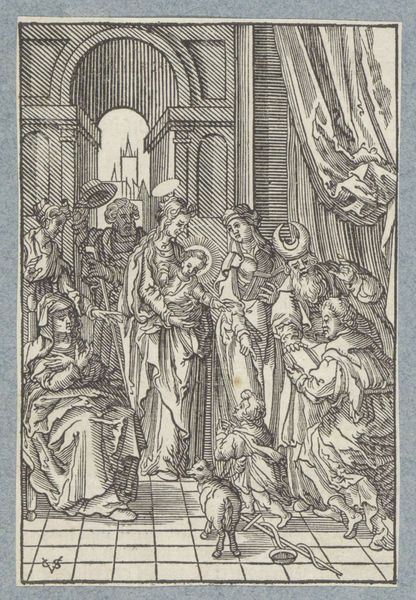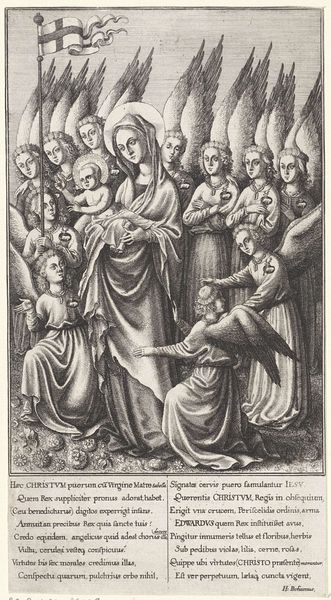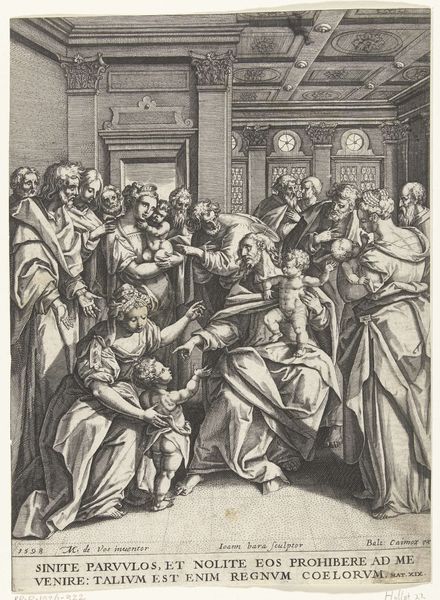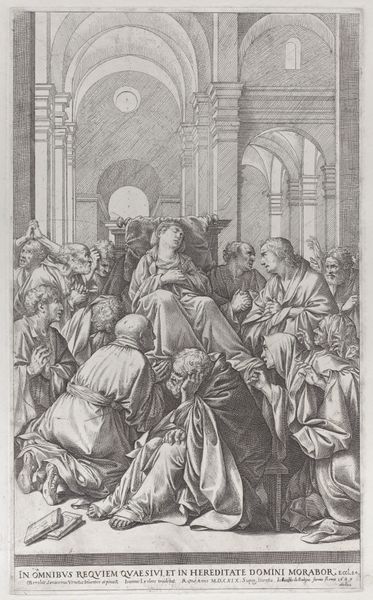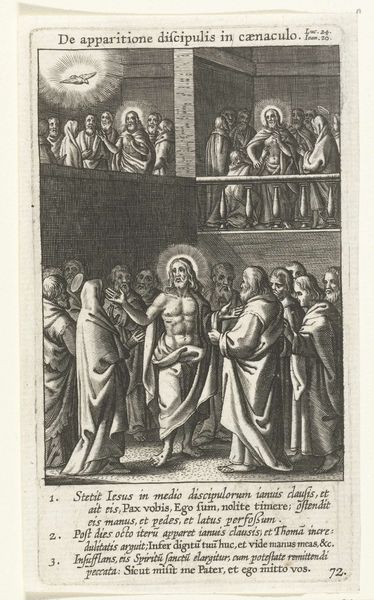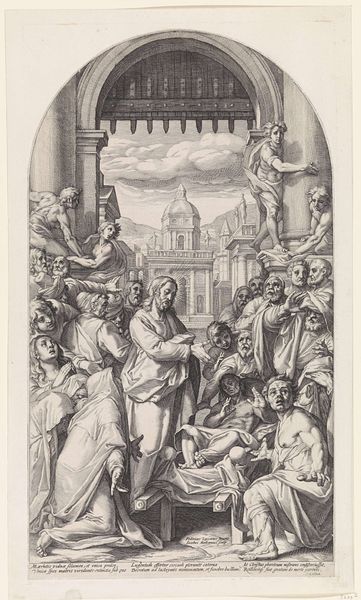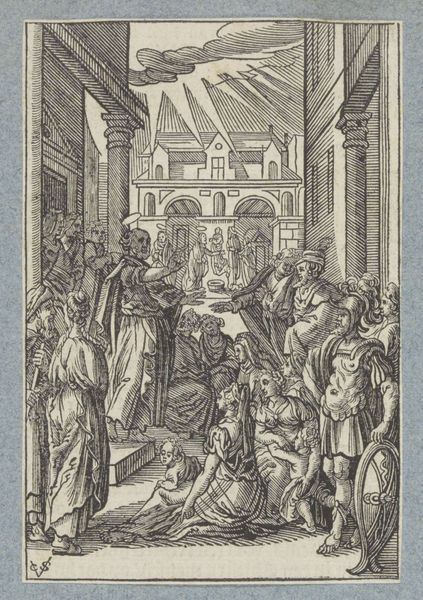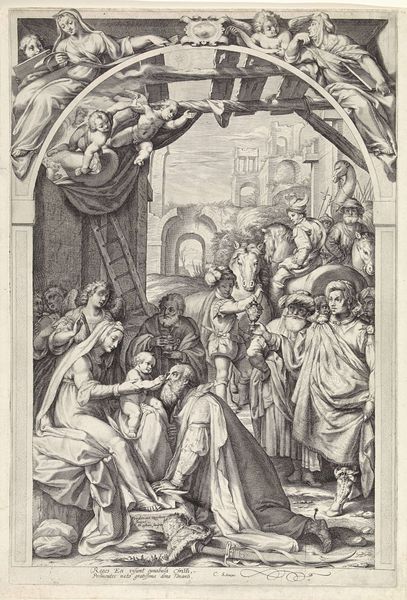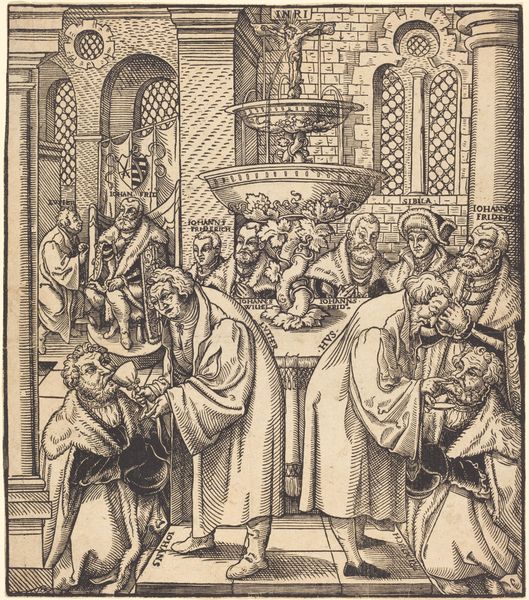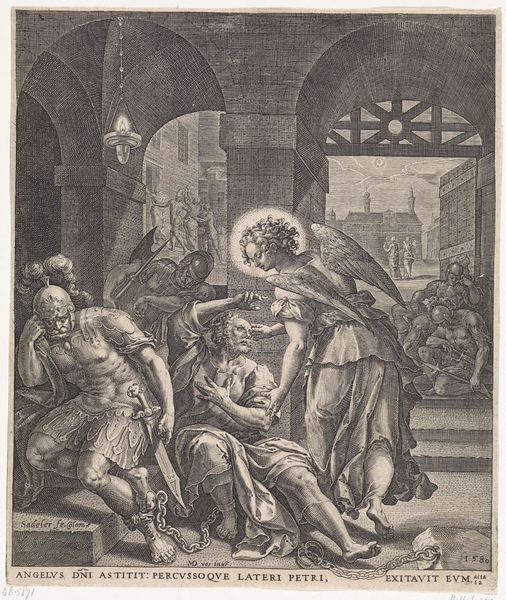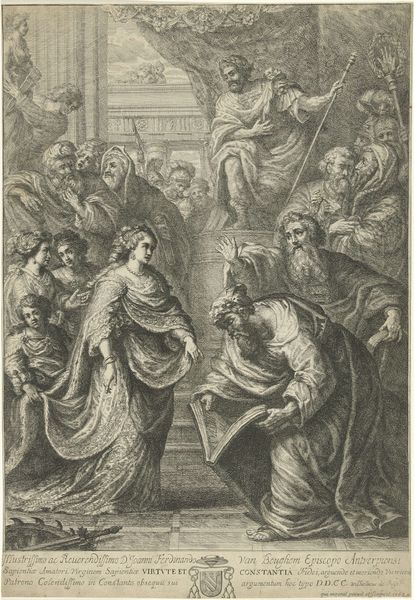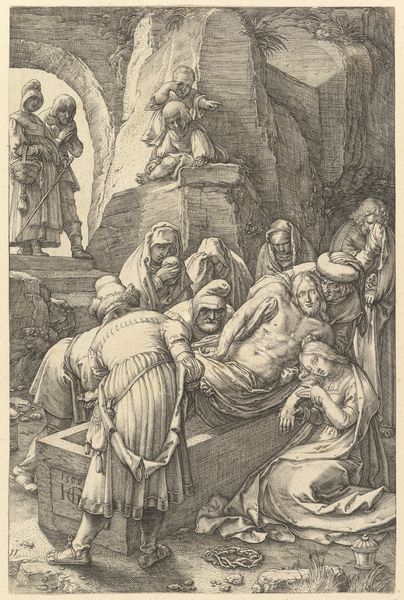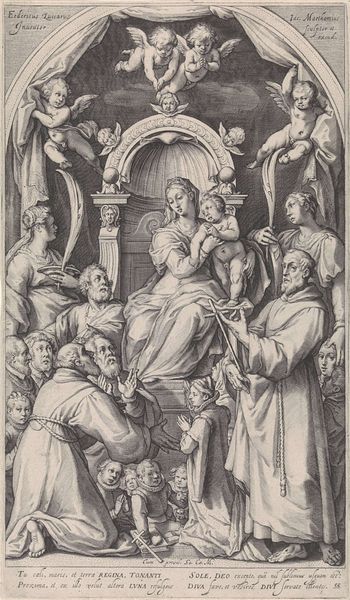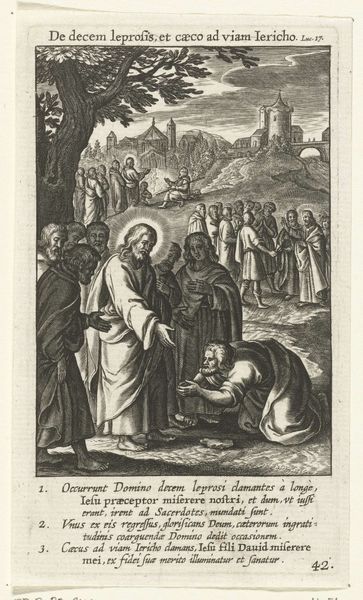
#
comic strip sketch
#
mechanical pen drawing
#
pen illustration
#
pencil sketch
#
junji ito style
#
personal sketchbook
#
sketchwork
#
pen-ink sketch
#
storyboard and sketchbook work
#
fantasy sketch
Dimensions: height 134 mm, width 84 mm
Copyright: Rijks Museum: Open Domain
Editor: So, we’re looking at “Intocht in Jeruzalem” by Wenceslaus Hollar, made in 1670. It's a print at the Rijksmuseum, and what immediately strikes me is how intricate the linework is. It depicts Jesus's entry into Jerusalem, but it feels… almost understated, given the subject matter. What's your interpretation? Curator: Well, considering the socio-political climate of the 17th century, this depiction of "Triumphal Entry" invites an exploration into the visual language used to communicate religious narratives and associated power structures of that time. How does Hollar's rendering deviate or adhere to established representations? What symbolic implications do those variations or echoes potentially convey about contemporary interpretations of power, faith, or maybe even authority? Editor: I see your point about the possible power structures! The crowd looks… diverse. There are people kneeling, some standing, but it does not necessarily portray hierarchy. Curator: Precisely. And what of the medium? A print allows for widespread dissemination. Think about the implications of replicating images in that era. How does it influence or affect interpretations of the central figure and message versus say, a large-scale, exclusive painting owned by the elite or the church? Was the artist making an effort to disseminate it broadly and how might it influence society if at all? Editor: So the reproduction enables wider reception! Perhaps that shifts the emphasis away from institutional power toward the individual’s relationship with the figure of Jesus. Curator: Yes, the democratizing aspect is important. Do you think that’s why Hollar made these artistic choices? Editor: I hadn’t thought about it that way before. Considering the potential democratization through print makes me wonder what the actual contemporary audience and readership might have been. It's fascinating how the format itself becomes part of the story! Curator: Exactly, thinking about the context in which the image was made encourages us to consider how an image, or narrative shifts, or gets amplified. It's fascinating indeed!
Comments
No comments
Be the first to comment and join the conversation on the ultimate creative platform.
